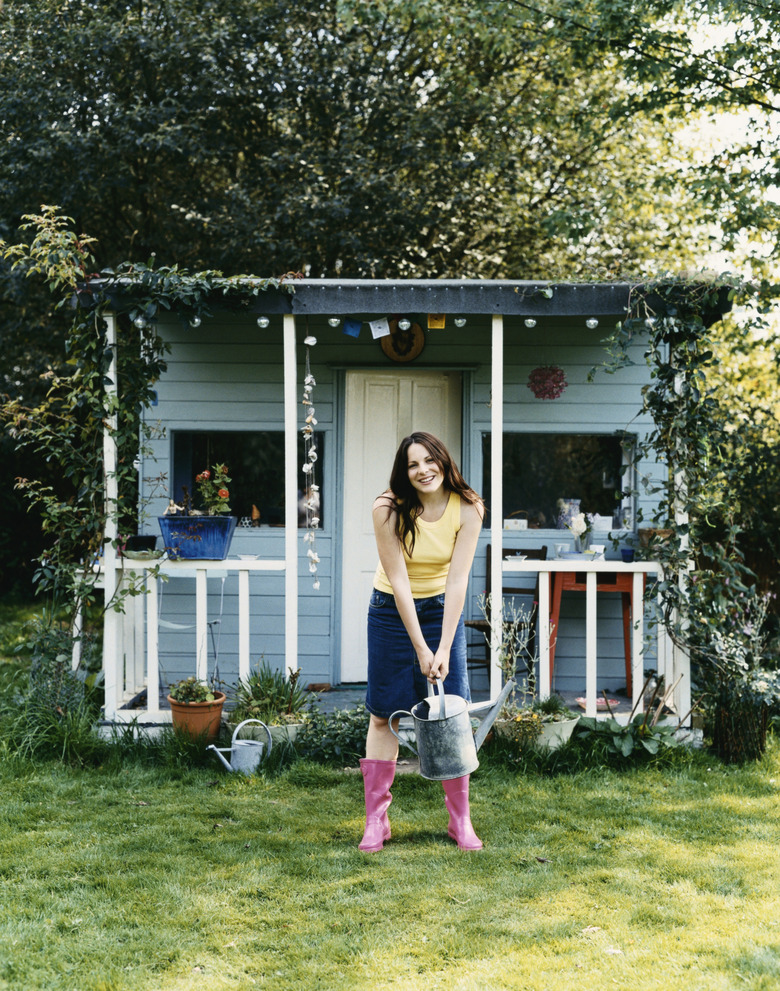How To Build A House Under 50K
Persons in the building industry may tell you that you can't build a house for $50,000 in the United States. Note however, that in one study scientists determined that bees can't fly. (See Resource 1) Sometimes conventional wisdom and even informed opinion is wrong. As of this writing, proponents of the growing "tiny house" movement in this country are building houses for $50,000 and even less.
Why It Can't Be Done
Why It Can't Be Done
There are many factors that strongly suggest you can't build a house for $50,000 in in the 21st century U.S. Among them are these:
• Land and permit costs often cost almost as much as your total budget. • Although at one time you could put up a few packing crates and some tarpaper to create something habitable, contemporary building codes require expensive foundations and structural reinforcements that make this kind of improvised structure illegal. • Code-required structural and civil engineering plans are expensive to begin with, and for liability reasons most engineers refuse to provide plans for radically under-financed projects. Most building departments want stamped engineering approval of anything even slightly unconventional. • Getting financing for a structure that has no building designer or contractor isn't possible. Lenders want assurance from professionals that a code-compliant project can be built within the financed budget. • To come close to building a house on a $50,000 budget, you'll have to cut many corners. Building inspectors who note this tendency will oppose the house passing inspection.
Why It Can Be Done
Why It Can Be Done
Despite these reasonable arguments, some Americans are still building houses for $50,000 or less — it can be done. Some houses featured in "Tiny House Movement" literature cost as little as $15,000. As the name indicates, these houses are very small because cost is a function of square footage. (See Reference 1)
Although some "tiny house movement" houses are as small as 150 to 300 square feet, 400 to 500 square feet is a more livable minimum. The average new house built in 2011 was around 2, 300 square feet. House plans for tiny houses are available from several sources, most of them inexpensive. (See Reference 2)
Even then, you'll need to exercise particular care in the preparatory phase.
The Preparatory Phase
The Preparatory Phase
The first step is determining whether your tiny house will be constructed on land or on a trailer frame. Most tiny houses are built on wheels — even if they will never be moved again — because doing so frees you from the obligation to conform to increasingly complex U.S. building codes. In some instances, however, tiny house builders have managed to build a code-compliant dwelling on land by adding the house as a second structure on an existing residential building lot. Often the primary house is owned by parents or relations. Usually these houses identify the building on submitted plans as a "studio" or "workshop" rather than as a primary residence. (See References 3 & 4)
If you build on land, where you build is critical. States with weather or earthquake issues — California being a prime example — tend to enforce building codes strictly, while other states may allow some deviation from the code.
Financing and Construction
Financing and Construction
Lenders do not look favorably on alternative housing. Contractors may not be interested in bidding on a very low budget project without a lender. Be prepared to self-finance as you build and to build the house yourself.
A few useful tips:
• Allot more time to building the house than you think it will take (See Reference 5) • Develop housebuilding expertise before you start; many community colleges have useful and inexpensive carpentry, cabinetry, plumbing and electrical courses. • Connect with other tiny house builders through community meetings, blogs and small house workshops. You'll learn a lot from those who have already built one or more tiny houses. (See Reference 3) • Search for good used materials sources. Persons from other cultures are amazed at what Americans routinely throw away. Buying used plumbing fixtures, for instance, may save you as much as 90 percent of the cost of the same items purchased new. Most larger cities have at least one good source of recycled building materials (See References 6 & 7)
References
- Portland Alternative Dwellings: Your Questions Answered — How Much Does a Tiny House Cost?
- Small House Society: Small House Plans
- Tumbleweed Houses: Tiny House Style — Ideas to Design and Decorate Your Tiny House
- The Tiny Life: 10 Tips for Potential Tiny House Dwellers!
- TinyHouseTalk: Q&A: How Long Does It Take to Build a Tiny House?
- Second Use: Current Inventory
- Mother Earth News: Save Money With Used Building Materials
